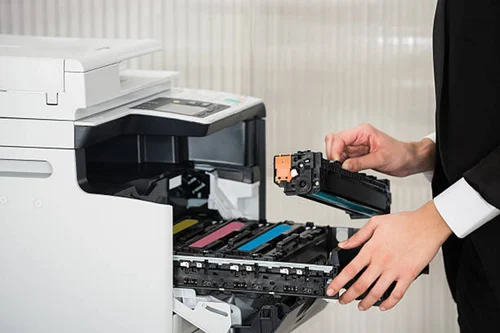Copier Machine Annual Maintenance
-
Cleaning: Dust and debris can accumulate inside the copier, affecting its performance. Regular cleaning of internal components, including rollers, paper path, glass surfaces, and toner cartridges, is essential.
-
Inspection: A thorough inspection of all mechanical and electronic components is necessary to identify any signs of wear or potential issues. This may include checking belts, gears, sensors, and connections.
-
Lubrication: Lubricating moving parts helps reduce friction and prevents premature wear. However, it's essential to use the appropriate lubricants recommended by the manufacturer.
-
Calibration: Ensuring accurate alignment and calibration of various components such as sensors, rollers, and paper trays helps maintain consistent print quality and reliable performance.
-
Software Updates: Updating firmware and software patches can improve functionality, security, and compatibility with new operating systems or network environments.
-
Toner and Consumables Replacement: Replace toner cartridges, drums, and other consumables as needed to maintain print quality and avoid damage to the machine.
-
Testing: After performing maintenance tasks, testing the copier under different operating conditions helps ensure everything is functioning correctly.
-
Documentation: Keeping detailed records of maintenance activities, including dates, tasks performed, and any issues identified, can help track the copier's performance over time and identify recurring problems.
-
User Training: Providing users with proper training on copier usage, including paper loading, clearing paper jams, and basic troubleshooting, can help prevent common issues and extend the lifespan of the machine.
-
Vendor Support: Depending on the copier's warranty or service agreement, you may involve the manufacturer's authorized service provider or a third-party vendor for specialized maintenance tasks or repairs.

